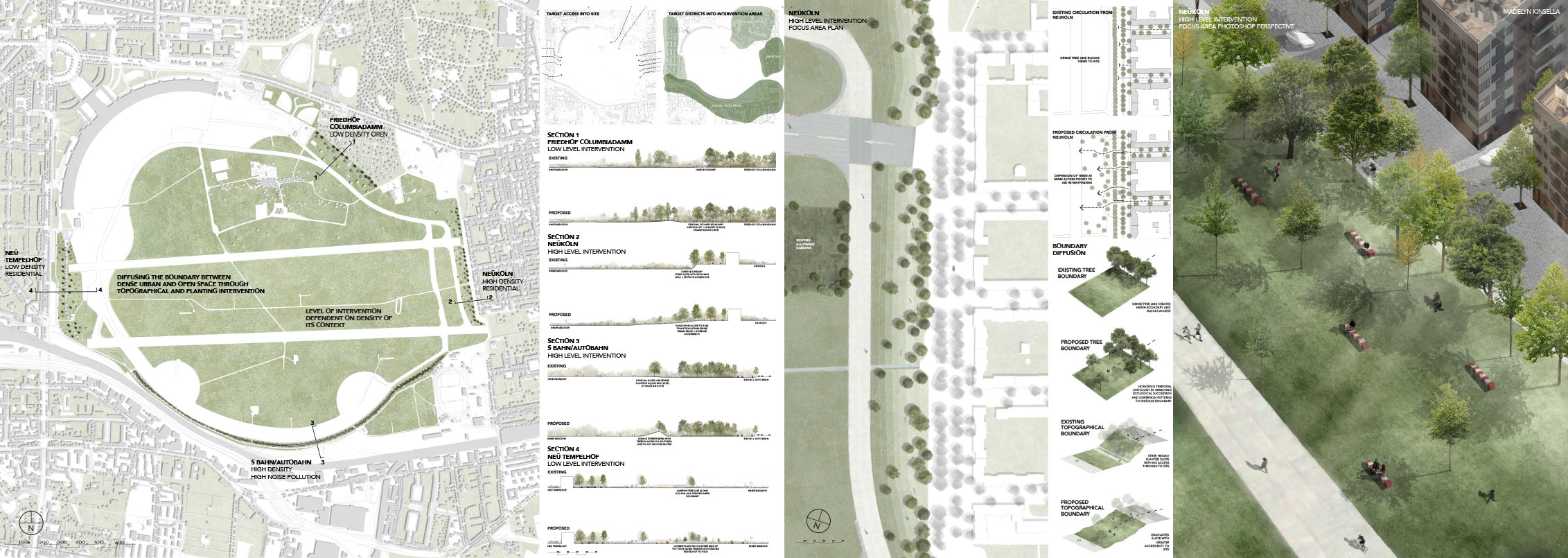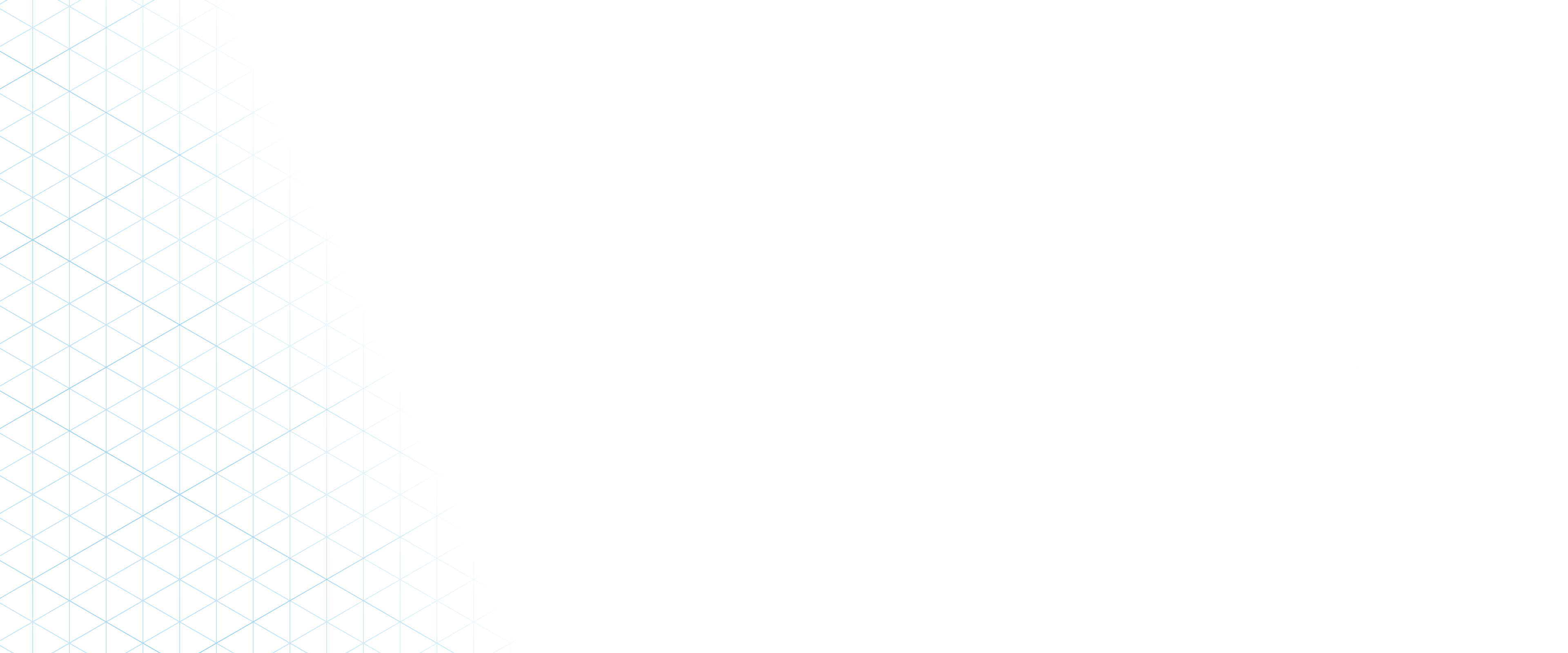

Madelyn Kinsella
Diffusing the boundary between dense urban and open space at Tempelhofer Feld
This project investigates methods for dissolving the pronounced boundary between Berlin’s dense urban context and the expansive open landscape of Tempelhofer Feld. As a former airfield turned public park, Tempelhofer Feld holds significant ecological, cultural, and recreational value. However, the sharp transition at its urban edge presents a spatial and experiential disconnect that limits physical and visual connectivity. This project proposes a series of spatial interventions that aim to create a more fluid, integrated threshold that blends architecture, landscape, and infrastructure. By reimagining this threshold, the design seeks to promote accessibility, ecological continuity, and a stronger relationship between urban life and open space, responding to growing pressures for climate resilience and inclusive public realms in Berlin.
Freidhof Columbia Damm is the open space that separates Tempelhof and Volkspark HasenHeide. Its low density, open nature requires a lower level of intervention. Removing the existing hard boundary between the cemetery and the field and adding a gentle 1:10 slope would create an informal boundary from the cemetery, create a permeable belt of parks from Hasen Heide to Tempelhof and ease the transition from their urban context.
Neükoln is a high-density residential area with a high population turnover, therefore requiring a higher level of intervention. It sits 3m above the airfield, currently separated by a retaining wall and steep slope. I propose to grade this slope, easing the transition and accessibility into Tempelhof from its dense urban context.
The S Bahn and Auto Bahn run across the southern end of the site, creating a high level of noise pollution. This requires a higher-level intervention, which proposes a 5m berm with a 1:2 slope, with dense tree cover on one side to further buffer noise into the field.
Neü Tempelhof is a lower-density residential area where a lower intervention level is required. There is an old, protected train track that runs along the west edge of the site, and within it a tree line has formed. I proposed to dissolve this tree line on either side of the track with layered planting that gets lower and less dense as you move out from the track, both toward Neü Tempelhof and toward the field.
A focus area studies the transition from dense urban to open space in Neükoln. Its existing boundary condition consists of a dense tree line on top of a steep slope, with steps being the only way to access the site from its eastern context. In this state, viewsheds are blocked and accessibility is limited. I propose to grade this steep topography to a 1:15 slope that allows for greater accessibility to the site and eases the transition from its dense urban context. Tree planting at this intervention would honour temporal ontology, by mimicking ecological succession and dispersion patterns, to dissolve the boundary from urban to open by allowing the trees to ‘walk’ into the space from the edge. Implementation would involve mimicking what would eventually happen over many years (if the site were seeded from the edge), all at once. Striped benches scattered across the slope honour the field’s former identity as an airfield, mirroring the ones along the nearby runways.